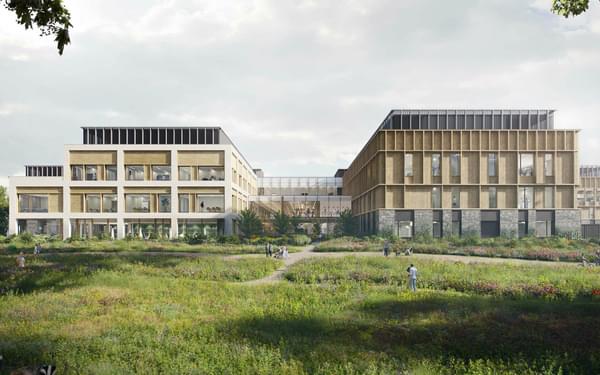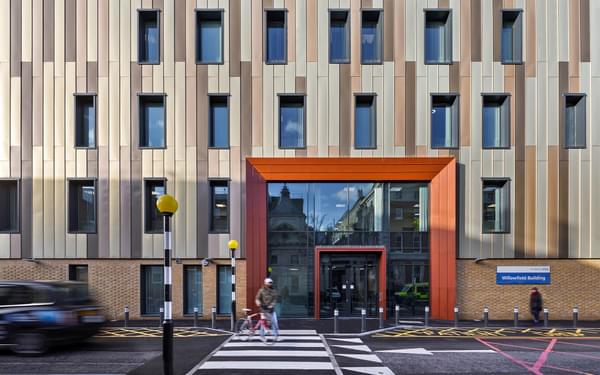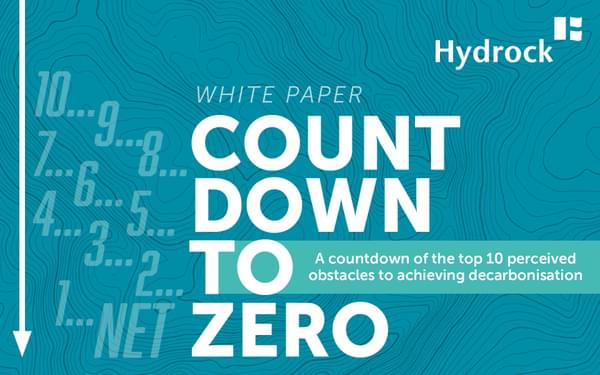Back to Articles
NHS Trusts need to be ‘fund-ready’ to maximise Government’s decarbonisation support
Mark Seberry \ 20th Mar 2023
With substantial sums of public money at stake, it is no surprise that the Public Sector Decarbonisation Fund (PSDS) requires a raft of evidence and other governance requirements to be met by those seeking support.
That’s why NHS Trusts hoping to secure funding as part of the autumn 2023 application window should start preparations now to ensure they are ‘fund
ready’ and maximise their chances of success.
What’s the background to the Public Sector Decarbonisation Scheme
The scheme was first announced in 2020 with an initial £1bn of funding to help reduce emissions by 75% from public sector buildings by 2037, compared to a 2017 baseline. Phase 3 of the scheme was confirmed in September 2021, with a further £1.425 billion of grant funding promised over the financial years 2022-2023 to 2024-2025 over multiple application and award windows.
Since its inception, NHS organisations have successfully secured over £282m from the fund towards a wide range of heat decarbonisation measures. This has been an important source of funding to support the ‘Greener NHS’ vision which embedded net zero into legislation through the Health and Care Act 2022.
Projects resourced to date by PSDS funds have included heat pumps, electric heating and connections to low carbon heat networks, plus supporting technologies including upgrading electrical infrastructure, metering and battery storage and a wide range of energy efficiency measures including LED lighting, insulation, glazing, ventilation and building management systems.
Phase 3c of the Public Sector Decarbonisation Scheme has up to £230m available in 2024/25. An additional financial year of funding has also been granted by the government which increases the value of the overall funding to the scheme and will enable Phase 3c projects to deliver across two financial years. The Application Portal for Public Sector Decarbonisation Scheme Phase 3c is expected to open in autumn 2023.
A compelling case for investment – how to secure PSDS funding
In simple terms, teams bidding for funding must be able to provide detailed baseline evidence data and a coherent plan which supports a compelling case for investment.
However, the challenge for NHS Trusts (as with many organisations) is that net zero targets are often set by third parties who may have limited awareness of what is required to achieve them in practice. Perhaps this is why the 2021-2022 ERIC data showed that more than 60% of Trusts did not currently have a written and approved Heat Decarbonisation plan for their sites which would remove the use of fossil fuels as a heating source and ensure a net-zero carbon heating system by 2040.
In addition, the key information which informs how an estate is currently performing is often spread across a disparate number of teams and varies in quality, often in non-digitalised formats.
In preparation for funding, Trusts must acknowledge these challenges and allow sufficient time, steps, and resources that will be needed to fully gather, digitise, and synthesise the relevant information to support their bid.
Understanding all emissions, defined under Greenhouse Gas Protocol as Scope 1, 2 and 3, helps establish the baseline performance of the medical and administrative estate and shape an overall strategy to decarbonise. But teams should also aim to reach beyond traditional measures of estates and sustainability performance, incorporating behavioural insights to help identify which buildings are most energy inefficient, where there are opportunities to create positive behavioural change to reduce energy wastage, and what supply-chain processes can be made more sustainable and efficient.
Key factors to consider include:
- Which buildings are of strategic importance but are under-performing the most?
- What is the utilisation of each building?
- What do backlog maintenance requirements tell us about inefficient assets?
- How robust is the site-wide utility infrastructure – where is it under-performing, and how possible is it to invest in on-site renewable energy technologies?
- Could roof space be dedicated to on-site solar energy generation to help offset additional load capacity requirements in order to decarbonise the heating load (e.g. switching from gas-fired to electric / heat pump heating)?
- How much space is allocated to EV charging, what form of chargers are being deployed, and what impact does this have on site-wide energy demand?
- Could battery storage or other energy storage technologies help reduce grid reliance and utility cost burden?
By considering the steps above and working closely together, estates and sustainability teams can successfully integrate PSDS funding opportunities with their broader estates and infrastructure strategies, associated capital development plans and business cases.
Five steps to be PSDS ‘fund-ready’
The Public Sector Decarbonisation Scheme offers NHS organisations substantial opportunities to alleviate their rising costs of backlog maintenance while achieving their green ambitions.
Our five key steps towards being ‘fund-ready’ summarise the key areas of preparation for NHS teams to help maximise their chances of success:
- Consider the range of data needed
- Understand and map existing sources and formats of data
- Identify time, resources and steps needed to gather and analyse data
- Capture and integrate behavioural insights alongside traditional estates and sustainability metrics
- Collaborate to align PSDS funding opportunities with both sustainability and estates goals
This article is produced jointly by:
Archus,
a consultancy specialising in all aspects of healthcare infrastructure. We assist NHS teams in the development of sustainability strategies, infrastructure business cases and alignment of strategic opportunities to maximise the effectiveness of the health estate, improving experiences and outcomes.
Hydrock, an engineering design, energy and sustainability consultancy. We work across the built environment to create places that inspire, respect the environment, and deliver value for users, owners and investors.















